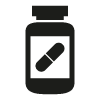Mental Health Update | Alarming Increase in Adolescent Suicides, Substance Use

 Mental Health Matters | Deaths from suicide in children and teenagers have dramatically increased during the past decade, with a notable spike in the past year, a new report shows.
Mental Health Matters | Deaths from suicide in children and teenagers have dramatically increased during the past decade, with a notable spike in the past year, a new report shows.
The Trust for America's Health (TFAH) and the Well Being Trust released Pain in the Nation: Education Brief, which reports that suicide rates almost doubled in youth aged 17 years and younger during the past 10 years and that it more than tripled in girls aged 10 to 14.
Moreover, more than one million adolescents had a substance abuse disorder in 2016.
The report authors call for the development of partnerships between educators, school- and community-based health professionals, state and federal government agencies, businesses, and healthcare organizations to design and implement screening and care programs for youngsters.
"This brief is a reflection of the fact that we're seeing a dramatic increase in gaps associated with drug and alcohol abuse and that we have a particular interest in preventing those deaths by working with children, adolescents, and families to propose policies that decrease the likelihood that those students will develop addictions or suicide," John Auerbach, MBA, president and CEO of TFAH and associate director for policy, Centers for Disease Control and Prevention, told Medscape Medical News.
"The good news is that there are a number of programs that have been shown effective, some based in schools or in schools working together with other community organizations, and we shine a light on what these programs are," he said.
TFAH is "a nonpartisan organization that focuses on prevention and public health policies and programs throughout the country," Auerbach reported. Because the foundation is "intentionally" not funded by governmental or corporate sources, "we can be a trusted, independent voice for policies and approaches that will be most useful for promoting the health and well-being of the American people," he said.
The brief reports that deaths from suicide among persons aged 17 and younger rose 84% from 2007 to 2016, with a 10% increase in from 2015 to 2016 in those younger than 18 years.
The statistics are particularly alarming for girls aged 10 to 14, whose suicide rate rose by 231% in the past decade and by 8% in 2016 alone.
The report shows that more than one million adolescents (aged 12 to 17) had a substance use disorder (either alcohol or drugs) in 2016 and that one fifth reported alcohol consumption within the past month.
An estimated 90% of adolescent drinking was binge drinking; 2 in 5 high school students reported consuming eight or more drinks on a single occasion.
The report touches upon broader systemic reasons for these alarming statistics, including "despair deaths" that "are straining our country's child welfare system, as more and more children are forced into foster care because of parental death or substance misuse.” In 2016 alone, the number of children in foster care increased for the fourth consecutive year. Parental drug misuse constituted the reason for the child's removal in more than one third of cases. Adverse childhood experiences increase the risk for negative outcomes, including substance use disorders, and increase the odds of suicidality in offspring. Alcohol use during pregnancy leads to an array of adverse birth outcomes, as well as a higher risk for subsequent abuse by parents.
Adverse childhood experiences increase the risk for negative outcomes, including substance use disorders, and increase the odds of suicidality in offspring. Alcohol use during pregnancy leads to an array of adverse birth outcomes, as well as a higher risk for subsequent abuse by parents.
"These heartbreaking statistics are clear warning signs that more needs to be done for children," Auerbach said.
Promising Programs
The report "calls for a national strategy to improve resilience" in the face of these "despair deaths," with much of the "important work" taking place in the school setting with "cross-sector coordination.” It also describes promising programs that have demonstrated success in promoting abstinence from drug and alcohol use, even after the conclusion of the program. The Communities That Care (CTC) program is a "community-based approach that targets predictors of problems rather than waiting for problems to occur."
This program has been shown to reduce health and behavioral problems as well as alcohol and drug use among students. A cost-benefit analysis found a benefit of $8.22 for every dollar invested in the CTC system.
Promoting School/Community-University Partnerships to Enhance Resilience(PROSPER) is "an evidence-based state delivery system for supporting sustained, community-based implementation of scientifically-proven programs that reduce adolescent substance misuse."
Youth participants — especially those at high risk — scored significantly lower on negative behavioral outcomes (eg, drunkenness, cigarette and marijuanause, use of other illicit substances, and conduct problems). Benefits lasted up to 6.5 years past baseline.
Drug Free Communities, a federal program, is designed to "encourage community stakeholders...to work together and deal with substance misuse problems in a comprehensive and coordinated manner."
The program showed success in lowering the prevalence of alcohol, tobacco, marijuana, and illicit prescription drug use (which declined by 27%, 32%, 14%, and 11% respectively among middle school students and by 19%, 28%, 6%, and 16% respectively among high school students). Recovery high schools are "designed for students recovering from a substance use disorder as an alternative to the justice system." They have been shown to increase avoidance of drugs and alcohol.
Important Role for Clinicians
The brief encourages improving the "school climate" through multitiered systems of support, which include prevention, early intervention, response, and treatment. The model "provides a concrete framework to improve school climate and contribute to student well-being and success."
The program uses positive behavioral interventions and supports that "rely on positive rather than punitive approaches to student misbehavior."
Additionally, schools are encouraged to screen students using validated, age-appropriate questionnaires, intervene with students who present risk factors, refer students who require further assessment and services for treatment, and provide onsite mental health services.
"Medical professionals can play a very important role," Auberbach commented.
"Some school-based programs involve working on partnerships with clinical providers in the community so more clinical services can be offered in the school setting," he said.
Moreover, "healthcare providers can participate in community coalitions that include schools, public safety officials, recreation facilities, churches, and parental groups.” Clinicians play "a very important role in providing information and education to members of the community regarding the nature of addiction as a health concern, not merely a public health concern," he noted.
Issues that clinicians can elucidate include "what happens in the body with addiction, what happens in the brain of a young person addicted to drugs, how the damage can be reversed, and that addiction is a treatable health problem rather than a crime or moral failing."
Clinicians can also be involved in screening students for suicidal ideation.
"It is helpful when these screenings are done in consultation with clinicians, and when clinical facilities and health professionals are drawn into partnerships with schools," he said.
He added that the "most successful programs are those which don't wait until an emergency and then scramble to figure out whom to call, but identify providers in the community who are knowledgeable about adolescents' mental health and known to the school."
That way, "if a student is identified as potentially suicidal, there are clear and easy roads to make referrals."


